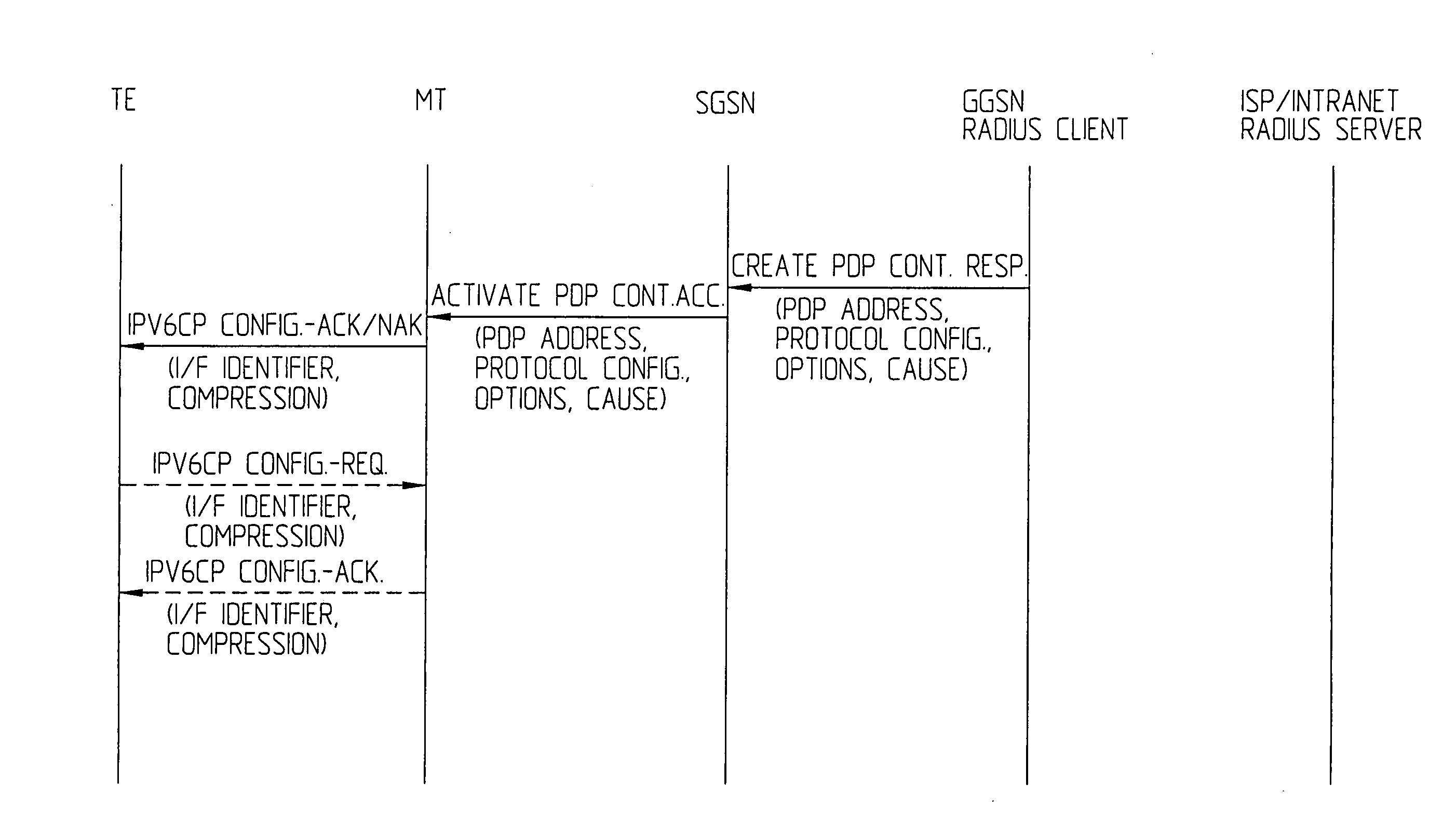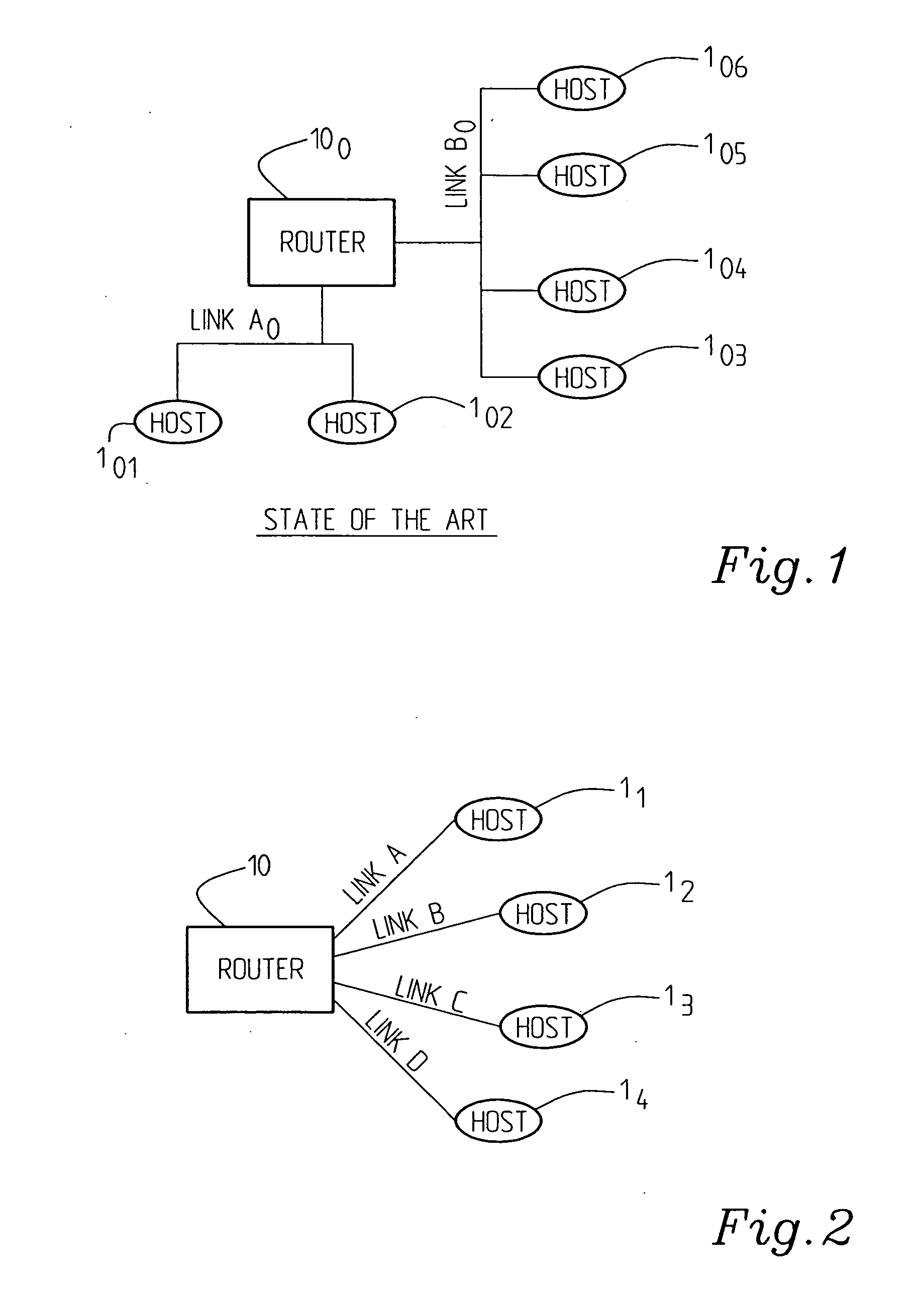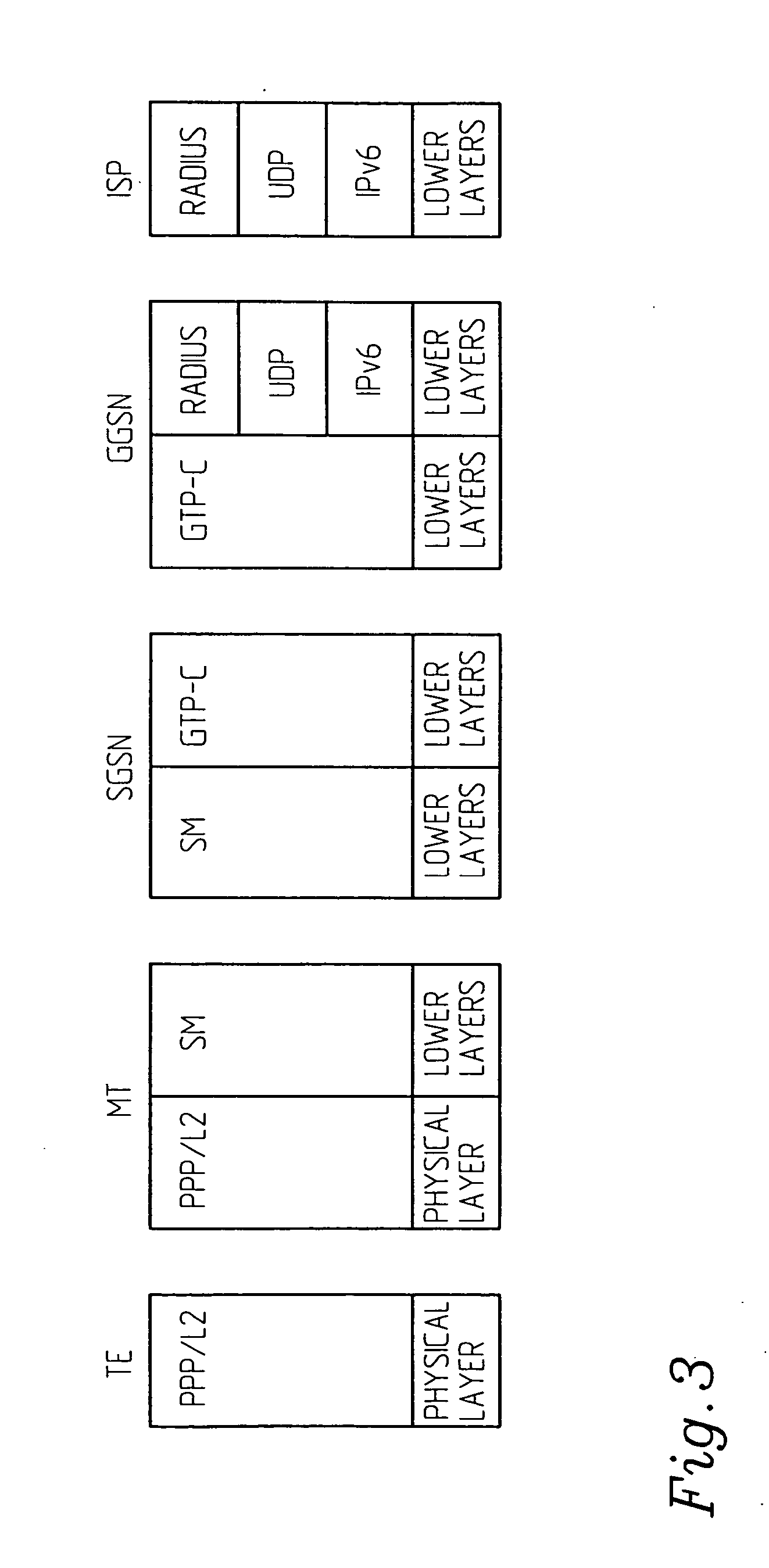System, an arrangement and a method relating to IP-addressing
a technology of ip-addressing and system, applied in the field of end-user station addressing, can solve the problems of not enough unique ip-addresses left to handle out for a new operator, a new type of end-user station, or more, and achieve the effects of fast creation or generation, fast set-up, and saving radio resources
- Summary
- Abstract
- Description
- Claims
- Application Information
AI Technical Summary
Benefits of technology
Problems solved by technology
Method used
Image
Examples
Embodiment Construction
[0033]FIG. 1 very schematically illustrates a case in which a router 100 is connected to hosts 101, 102 over a first link A0 and to hosts 103, 104, 105, 106 over a link B0, i.e. point-to-multipoint connections. It may e.g. comprise an Ethernet Link. This is a general implementation e.g. as referred to in IETF RFC 2461.
[0034]FIG. 2, however, shows a router 10 connected to hosts 11, 12, 13, 14 over separate links A,B,C,D, i.e. there is only one host on each link (point-to-point links).
[0035] Such arrangements are of course known, but the inventive concept relates to IPv6 addressing in such implementations, for which improvements can be provided. The hosts may e.g. comprise 3GPP mobile stations. According to the invention the IPv6 addressing procedure e.g. of RFC 2461 is improved for such arrangements, i.e. both for point-to-multipoint and point-to-point links in general.
[0036] The invention will specifically be explained through implementations concerning GSM / GPRS, although the con...
PUM
 Login to View More
Login to View More Abstract
Description
Claims
Application Information
 Login to View More
Login to View More - R&D
- Intellectual Property
- Life Sciences
- Materials
- Tech Scout
- Unparalleled Data Quality
- Higher Quality Content
- 60% Fewer Hallucinations
Browse by: Latest US Patents, China's latest patents, Technical Efficacy Thesaurus, Application Domain, Technology Topic, Popular Technical Reports.
© 2025 PatSnap. All rights reserved.Legal|Privacy policy|Modern Slavery Act Transparency Statement|Sitemap|About US| Contact US: help@patsnap.com



